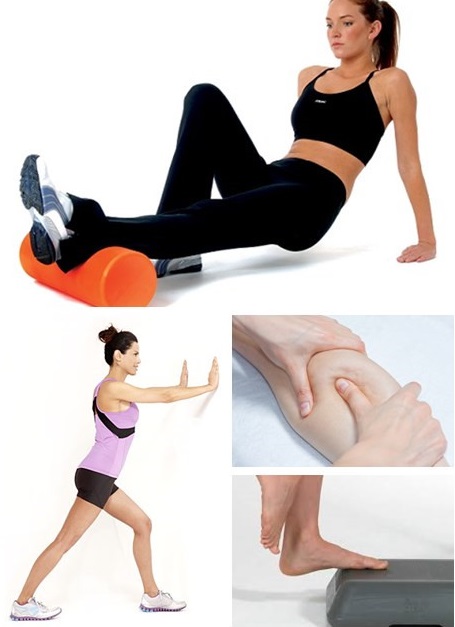The calf muscle is one of the most important muscles used in running. It works to push the foot down and then pull up to create the propulsion that is used for running and walking. It is made of two main muscles -the soleus and gastrocenemius. Working with the Achilles tendon, they control the ankle bones.
If you have ever experienced tight calves after running, you know how painful a condition it can be. It is a common problem for those who run or walk for exercise. Most people feel the muscle tightening while it is in use, while others have issues after they have stopped. This condition can affect the entire leg, foot and hip joints and muscles too if not corrected and prevented.
Why Does It Happen?

There are several potential causes for tight calves after running. By working through a process of elimination, you and your doctor can identify where the source of your problem lies.
1. Support Issues
The most common cause relates to support issues. It may not always be that your running shoes are too broken down to support your foot well, but you may be wearing shoes when you are not running that aren't helping things along. High heels lead to a shortening of the calf muscle that can become a tightening when you exercise.
2. Muscle Imbalance
There are three main muscles in the calf region – the soleus, gastrocenemius and plantar – which all work opposite the tibialis group. If any one of the muscles involved becomes overworked, it can cause another to weaken. This will then create an imbalance that leads to soreness. Your muscles can also become too developed to fit into the sheath that is supposed to contain them, which also leads to tightness and pain.
Ways to Relieve Tight Calves After Running

1. Foam Rolling
These are small, dense foam rollers similar to the yoga rolls you may have seen. Place the roller on the floor and roll your leg over it, staying focused on the calf muscle. This will act like a massage to help loosen up the muscle.
2. Massage
Deep tissue massage is very effective for relieving tight calves after running. You can also use a style called remedial, this is a lighter and more relaxing form of massage. Both styles help to increase the circulation in the area which relaxes the muscle.
3. Stretching
Stretching is essential, both before and after a warm-up. The main stretch for the calves is to brace your hands on a wall or post and extend your leg as far as you can behind you while keeping your heel flat on the ground. Hold this position for a few seconds, then release and repeat.
4. Step Drops
Step drops can be helpful to relieve your tight calves after running.
- Stand with the balls of your feet on the edge of a step with your heels hanging off.
- Drop the heel below the step level and hold that position for about 30 seconds.
- This will gently stretch all of the major muscles involved.
- Just don't bounce while you do it, you want the stretch to be gentle.
5. Pull Backs
For this stretch you will need a resistance band. This targets the larger outer calf muscle, the gastrocnemius.
- Sit down on the floor with your legs stretched straight out in front of you. Make sure your back is straight and loop the resistance band around the ball of one foot.
- Flex the foot back towards you, like in a toe lift if you were standing.
- When you feel a pull on the muscle, stop and hold the foot in that position with the band for 30 seconds and then release.
- Repeat in sets of 10.
6. Seated Soleus Stretch
- Sit down as with the pull backs.
- Pull your right leg up enough so the foot is flat on the floor.
- Reach down and grab the ball of the left foot and draw the foot towards your body as far as it can go without the heel leaving the ground or the right foot moving.
- Hold for 30 seconds and repeat in sets of 10.
7. Seated Achilles Stretch
- Start in the same position as before.
- Keep the right leg out and pull the left up with the foot flat on the floor until the heel is as close to your buttock as possible.
- Keeping the left heel on the floor, pull the toe up toward your body as far as possible.
- Hold for 30 seconds and repeat in sets of 10.
8. Standing Calf Raises
- Stand with your feet shoulder width apart and hold on to the back of a chair.
- Slowly rise up to the balls of your feet, heels off the ground and hold that position for a few seconds.
- Slowly lower your heels back to the ground. Repeat in sets of 10.
Can Tight Calves After Running Be Prevented?
When it comes to preventing tight calves from running, or any other exercise, there are several things you can do.
Warms Ups Are Essential
The first is to make sure you are doing an adequate warm ups that includes stretches that target the calf area. Stretches such as:
- Calf raises
- Ankle rolls
- Ankle flexes
all work to insure increased flexibility. While running, you should take care to make sure you are using proper form, and that your shoes are in good condition.
A Good Diet Will Help
Not enough can be said about the role that diet plays in preventing tight calves too. You don't have to go to extremes, but a balanced diet that is high in protein has been proven to be best for proper muscle functioning. Drinking lots of water throughout the day is also one of the key diet tips for preventing tight muscles of any kind.
